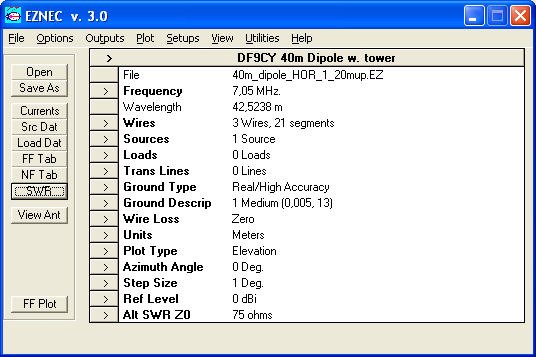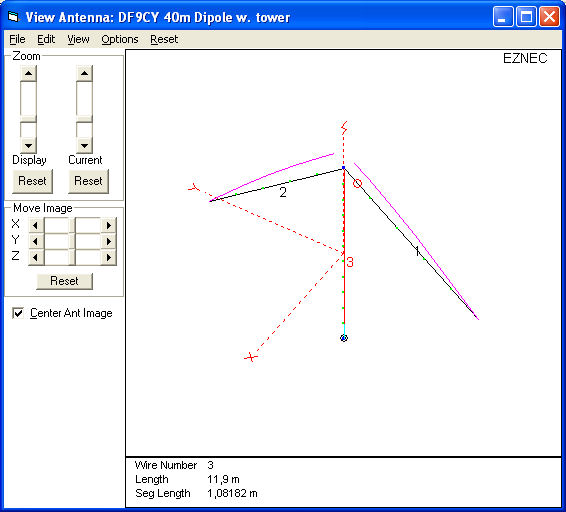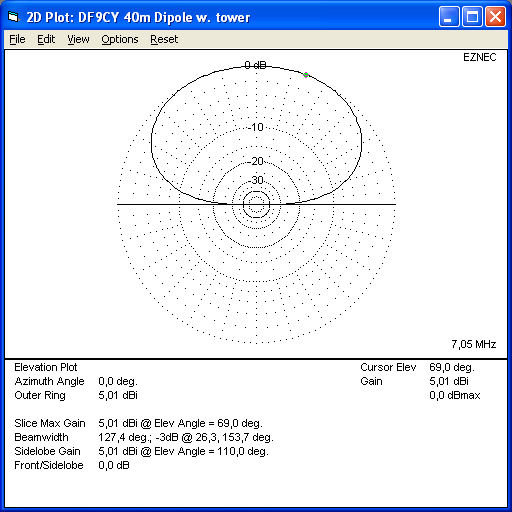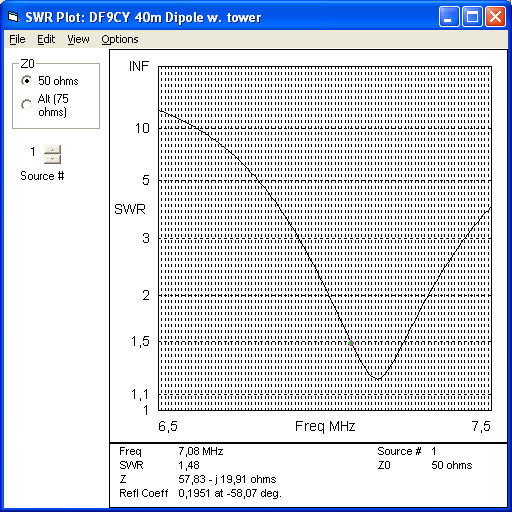© Christoph Petermann DF9CY 2007
Last Revision: 07 November 2007
For my new antenna system I wanted to have a monoband dipole for the 40m band, which I prefer most of the lower amateur radio band. Further more such an antenna will deliver enough energy for my SDR (Software Defined Radio) projects and the DRM receivers working on the medium wave bands. I tried a half-size unsymmetric multiband antenna (half FD4) or FD3, but this does not work very well and I have RF inside the house even using a 4:1 balun transformer.
Dimension
Dimensioning is simple:
c/f => 299,5 / 7,05 = 42,48m
Quarterwave => 42,48 / 4 = 10,62m
Velocity factor = 0,97 => 10,62 * 0,97 = 10,30m
Antenna Image
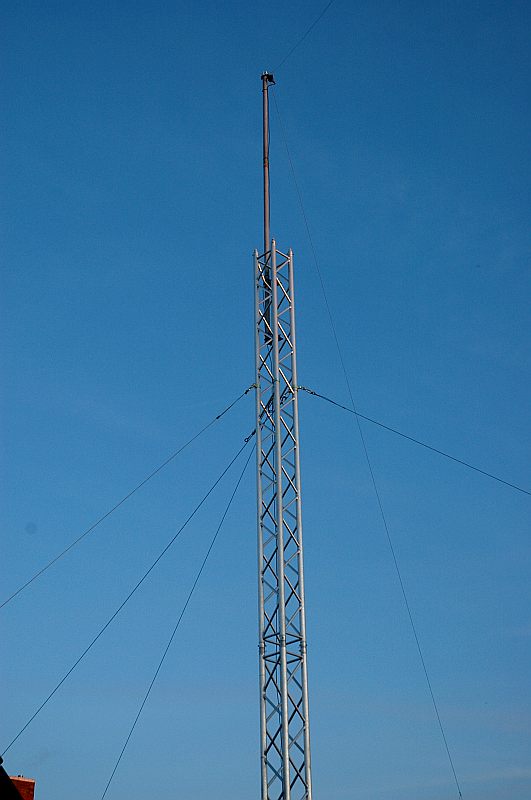
Experience
The dipole is mounted with its centre over the top of my new tower. The top is 11.5m and the ends of the two dipole legs are about 6 .. 8m above the ground. I left the ends a little bit longer than calculated. So I the antenna was a bit low in its resonance frequency. After trimming it works excellent now at a very low SWR.
First ever QSO was with ZM2B (New Zealand) .. almost unbelievable. DX is workable almost every day and I could raise my countries standings on 40m from 107 to 120 within two weeks.
Furthermore I use this antenna for my DRM (Digital Radio Mondiale) reception on shortwave. It does a good job there too. On Mediumwave this antenna does not work any more for that purpose.
The tower - by the way - you see on the image is made out of two aluminium segments and is capable of carrying several hundred kilograms as vertical load. I am not intended to do that ... The elements are available from "GlobalTruss" and they are normally used in making stages for music performances. The guy wires of the tower are insulated at both ends to avoid or reduce any resonances.
Construction Details
The antenna uses a 1:1 balun transformer and 1mm (7*7 CU) wire. There are no end insulators, as strong nylon rope is used for fixing the dipole leg ends.
Antenna Simulation with EZNEC
I simulated the antenna with my EZNEC simulator, which gives some hint about how the antenna will work. The antenna is put up to 11.5m height at the centre. Later I will reduce this to about 8,5m, because the top of the tower will be used for the VHF antennas.
